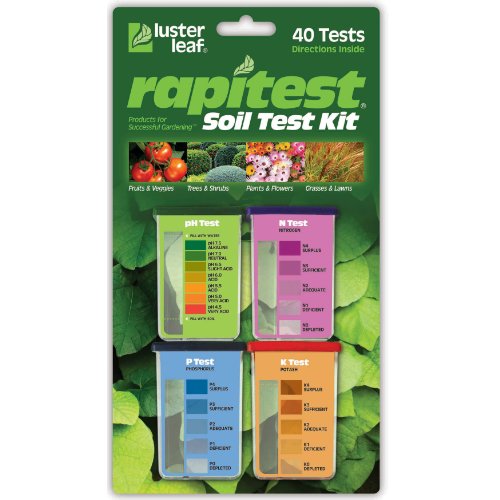This post may contain affiliate links which may generate a small commission from clicks that result in a purchase.
If you want to grow a potted olive tree, you must have asked yourself, what is the best soil for olive trees in pots?
The best soil for olive trees in pots is a well-draining mixture of sand, silt, and clay of pH between 6 – 8 to achieve the top results. Such soil has adequate spaces between particles; as a result, it ensures root penetration, smooth water, and nutrition circulation essential for healthy tree life.
Consequently, a commercial potting mix specially blended for olive trees is an excellent option for planting olives in pots. It is a perfect combination for vigorously growing olive trees.
An important thing to mention is that since olive trees don’t have a lot of soil in pots, you must maintain adequate nutrients in the soil. So make sure you care for and maintain the potted tree properly.
By the end of this guide, you’ll have the information necessary to select the best soil for potted olive trees and understand why it’s so essential for your tree’s health and growth.
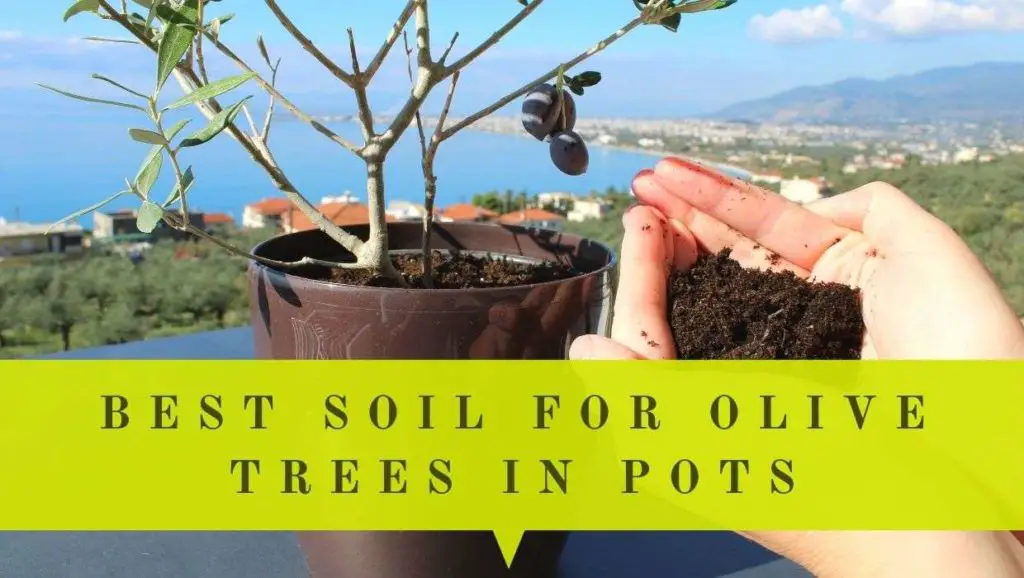
I. Essential Factors of the Best Soil for Potted Olive Trees
Here is everything you need to know to ensure the best soil for olive trees:
| Best Soil Requirements | Description | Tips |
|---|---|---|
| SOIL DRAINAGE | Well-draining soil | Avoid waterlogging, ensure pots have drainage holes, check for yellowing leaves or mushy roots |
| NUTRIENT COMPOSITION | Nitrogen (N), Phosphorus (P), Potassium (K), and micronutrients | Choose nutrient-rich soil |
| SOIL pH | Slightly acidic to neutral 6.0 – 8.0 pH | Adjust with garden lime or sulfur/peat moss |
| SOIL TYPE | Loamy, sandy, or well-draining clay soils; a mix of sand, silt and clay | Avoid heavy clay or compacted soils |
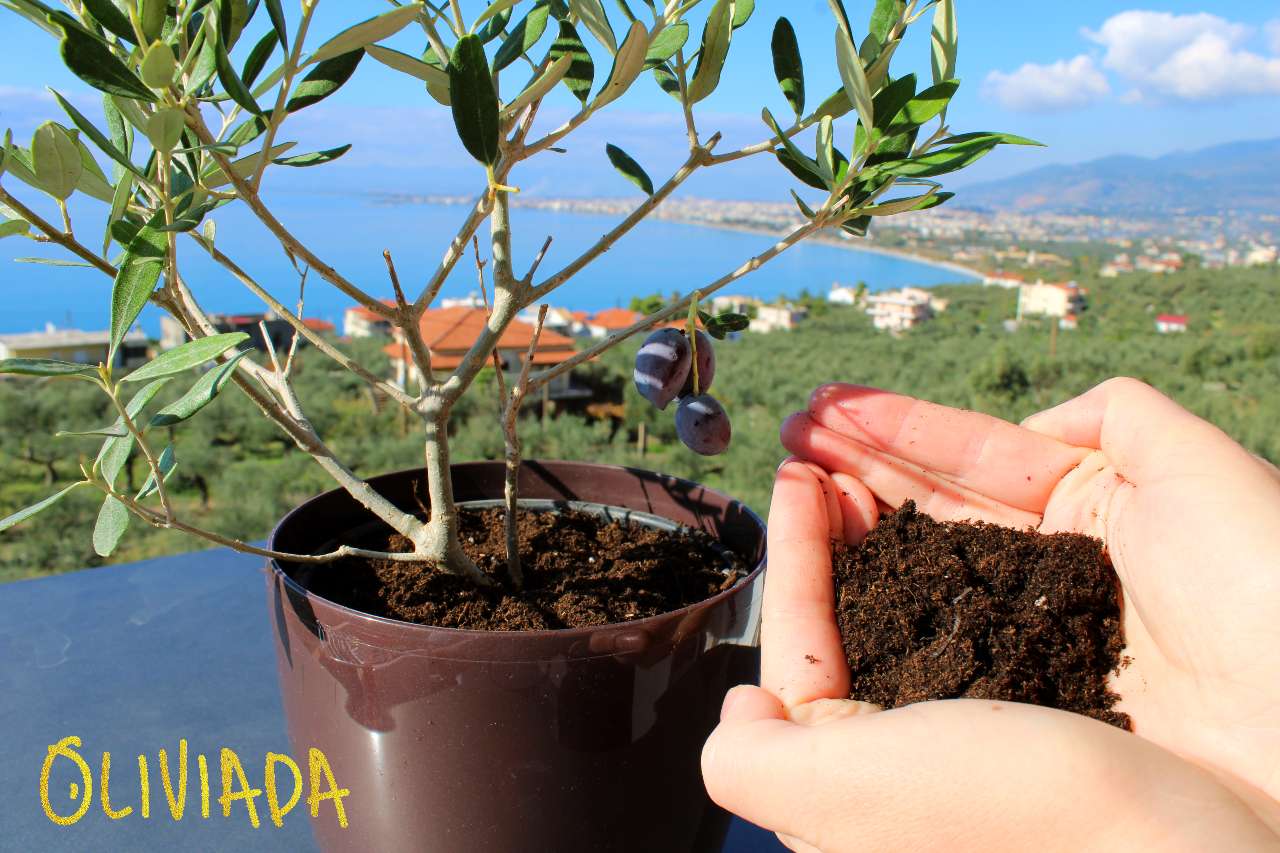
1. Soil Drainage
Let’s talk about drainage – it’s crucial to consider when choosing the perfect soil for your potted olive tree. You see, olive trees are native to the Mediterranean region, which means they’re used to well-draining soils that don’t hold too much moisture around their roots.
Proper drainage is key to maintaining a healthy olive tree, as it helps prevent issues like root rot and fungal diseases. Ensure a pot or container of your olive tree has enough drainage holes and doesn’t retain moisture.
Signs of Poor Drainage
Keep an eye out for these telltale signs of poor drainage:
- Waterlogged soil: If your soil remains soggy and doesn’t dry out relatively quickly after watering, that’s a red flag indicating poor drainage.
- Mushy or discolored roots: When inspecting your olive tree’s roots, they should be firm, white, or light tan. If they’re mushy or have a darker, discolored appearance, that indicates poor drainage and potential root rot.
- Yellowing leaves: If your olive tree’s leaves are turning yellow and dropping off, this could indicate that the soil isn’t draining well and the roots are suffocating from excess moisture.
2. Nutrient Composition
Olive trees require proper nourishment to develop, and here’s a quick rundown of the essential nutrients your tree will love:
- Nitrogen (N): The MVP for vibrant, lush foliage and overall growth, nitrogen keeps your olive tree looking its best.
- Phosphorus (P): This powerhouse nutrient supports strong root development and bountiful fruit production, making it a must-have for your olive tree’s diet.
- Potassium (K): A true multitasker, potassium boosts your tree’s resistance to diseases and pests while improving fruit quality.
- Micronutrients: Although needed in smaller quantities, elements like iron, zinc, and manganese play a vital role in your tree’s well-being and overall health.
Role of Soil in Nutrient Delivery
A well-balanced, nutrient-rich soil is like a gourmet buffet for your olive tree, providing it with all the essential elements it needs to grow and thrive.
The best soil for olive trees in pots will supply vital nutrients and ensure they’re easily accessible to the tree’s roots. When you select soil with excellent nutrient composition and appropriate pH levels, you create an environment where your olive tree can absorb those nutrients efficiently and flourish.
3. Soil pH
Olive trees prefer a slightly acidic to neutral pH, typically between 6.0 and 8.0.
When your soil’s pH falls within this sweet spot, your olive tree can efficiently absorb the essential nutrients it needs to grow strong and healthy. Maintaining the correct pH balance is like unlocking the door to a world of nourishment for your tree.
| Soil pH Range | Nutrient Availability | Notes |
|---|---|---|
| < 6.0 | Limited | Nutrient absorption is reduced, especially for phosphorus, calcium, and magnesium. |
| 6.0 – 6.5 | Optimal | Nutrient availability decreases, especially for micronutrients like iron, manganese, and zinc. |
| 6.5 – 7.5 | Good | Nutrient availability is still high, but phosphorus may start to become less available. |
| 7.5 – 8.0 | Acceptable | Nutrient availability begins to decrease, especially for micronutrients like iron, manganese, and zinc. |
| > 8.0 | Limited | Nutrient absorption is reduced, especially for micronutrients. Alkaline soil may cause deficiencies in iron, manganese, and zinc. |
Adjusting Soil pH
But what if your soil’s pH isn’t quite in that perfect range? Adjusting soil pH is simpler than you might think. Here’s how to do it:
- To raise soil pH, add garden lime, which will make your soil more alkaline.
- To lower soil pH, use sulfur or an acidic amendment like peat moss, making your soil more acidic.
Just be sure to test your soil’s pH regularly and adjust as needed to keep your olive tree thriving and happy.
4. Soil Type
A well-drained potting mix of sand, silt, and clay is the best soil for olive trees in pots. Alternatively, a mixture of equal parts of peat, sand, perlite or bark, and organic matter is a great option too. These are the structures you need to allow water and air circulation and form adequate root systems for nutrient uptake.
Searching for Premium Olive Oil?
Get OLIVIADA Olive Oil from Kalamata, GREECE!
To sum up, the best soil for olive trees is a combination of large particles with a larger space between them, providing plenty of air to the tree’s roots and not holding moisture. Consequently, the potting mix blended from materials that help to increase aeration and improve drainage is better for olive trees than the average garden soil.
For instance, Fast Growing Trees has an excellent product for you – an all-natural mix with ideally designated ratios of perlite, vermiculite, and sphagnum peat, which help olive trees to retain moisture, air, and vital nutrients and grow lush, healthy trees.
Also, there is an ideal potting mix dedicated to olive trees available in the market:
Last update on 2024-04-12 / Affiliate links / Images from Amazon Product Advertising API
II. Best Soil Types for Potted Olive Trees
Let’s look into the best soil types for potted olive trees’ characteristics and benefits:
1. Loam Soil
Loam soil is one of the best options for your potted olive tree. It blends sand, silt, and clay particles, creating well-balanced, nutrient-rich soil. It offers excellent water retention while allowing proper drainage, making it an ideal choice for olive trees.
Benefits of Using Loam for Potted Olive Trees
- Its well-draining nature helps prevent waterlogging and root rot.
- The rich nutrient content gives your tree the sustenance it needs to thrive.
- Loam’s excellent structure promotes healthy root growth, ensuring your olive tree gets a solid foundation to grow strong and healthy.
2. Sandy Loam
Another great option for potted olive trees is sandy loam soil. This soil type has more sand particles, giving it a loose, well-draining texture. Sandy loam is still rich in nutrients but offers even better drainage than loam, making it perfect for olive trees that prefer drier conditions.
Benefits of Using Sandy Loam for Potted Olive Trees
- Its exceptional drainage capabilities help protect your tree from root rot and fungal diseases.
- The soil’s texture improves aeration, promoting strong root growth and tree health.
- And, like loam, sandy loam provides your olive tree with essential nutrients for optimal growth.
3. Soilless Mixtures
If you’re looking for an alternative to traditional soil, soilless mixtures might be the way to go. These mixtures are lightweight, pest-free, and offer excellent drainage and aeration. They’re ideal for gardeners who want more control over their potted olive tree’s growing conditions or need a soil-free option due to restrictions.
Popular Soilless Mix Components
You can use several popular soilless mix components for your potted olive tree. Some common choices include coconut coir, perlite, and vermiculite. You can also add slow-release fertilizers or other amendments to ensure your olive tree gets the nutrients it needs.
By customizing your soilless mix, you can create the perfect growing environment for your olive tree, helping it grow strong and healthy in its pot.
| Soil Type | Characteristics | Benefits for Potted Olive Trees |
|---|---|---|
| Loam | Balanced mix of sand, silt, and clay particles | Well-draining, nutrient-rich, promotes healthy root growth |
| Sandy Loam | Higher percentage of sand, well-draining texture | Excellent drainage, good aeration, provides essential nutrients |
| Soilless Mix | Mixture of non-soil components like coconut coir, perlite, and vermiculite | Lightweight, pest-free, customizable, great drainage and aeration |
III. Making Potting Mixture for Olive Trees
Another way to get the best soil for olive trees is to make your well-draining potting mix. It is straightforward to do as long as you’ve got the required soil amendments.
Here’s a simple step-by-step guide to help you whip up the perfect blend for your beloved tree:
- Start with a base of high-quality garden soil or potting mix.
- Add in some sand or perlite to improve drainage and aeration.
- Mix in compost or well-rotted manure to increase nutrient content.
- Test the pH level of your mix and adjust as needed using garden lime or sulfur.
- Combine all the ingredients thoroughly, ensuring an even distribution of nutrients and amendments.
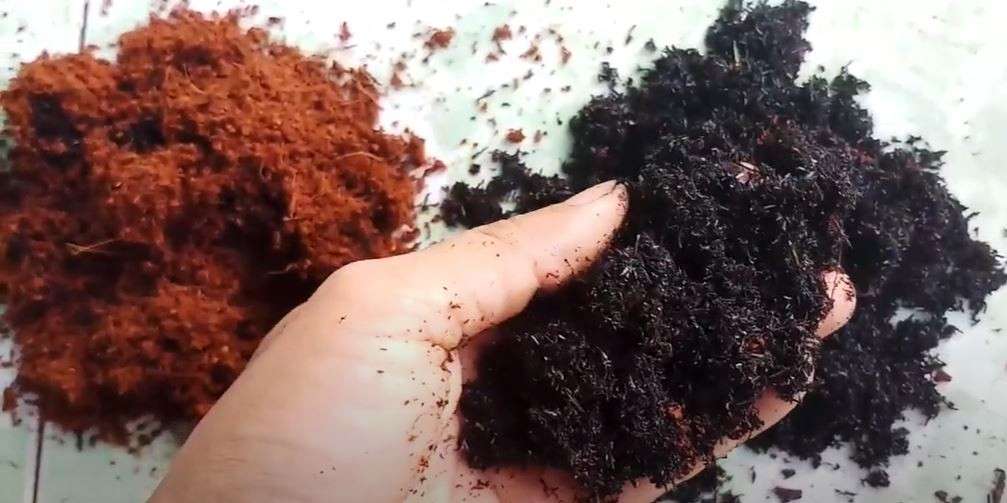
Key Components to Include
When creating your DIY soil mix, there are a few key components you’ll want to include:
- Garden soil or potting mix – provides a foundation for your blend.
- Sand or perlite – enhances drainage and aeration.
- Compost or well-rotted manure – boosts nutrient content.
- Garden lime or sulfur – helps adjust the pH level to meet your olive tree’s needs.
Incorporating these elements will create a well-balanced, nutrient-rich environment for your potted olive tree to flourish.
There are more ways to make your potting mix, as long as you create a combination that is well-draining and good for olive tree roots. The particles that improve drainage and increase water retention are the following:
| Sand | Perlite | Sphagnum |
| Silt | Vermiculite | Peat Moss |
| Gravel | Pumice | Orchid Bark |
Adjusting the Mix for Specific Olive Tree Needs
The beauty of creating your own soil mix is that you can tailor it to your olive tree’s specific needs. For instance, add more sand or perlite to the mix if your tree requires better drainage. If your tree’s growth is slow or its leaves are yellowing, increase the compost or manure content to provide additional nutrients.
Likewise, you can adjust the pH level by adding garden lime to raise the pH or sulfur to lower it.
IV. Maintaining Soil for Potted Olive Trees
1. How Often to Change Olive Tree Soil
Usually, you’ll need to change the soil when the olive tree outgrows its pot every three to four years. Thus young olive trees may need to replace old medium each 1 – 2 years because of the rapid growth of their roots.
Another reason you may need to change olive tree soil is when it is root-bound and needs repotting.
When it’s time to repot your olive tree, it is best to use a fresh batch of the potting mixture to replace the old soil.
If you are changing pot or container, ceramic or wooden pots are better for olive trees than plastic, metal, or glass pots, which help retain moisture. Indeed, ceramic and wood allow more evaporation.
You can also keep using the same pot when changing olive tree soil. You should take the tree out of the pot, trim the roots, and then re-pot it in fresh potting soil.
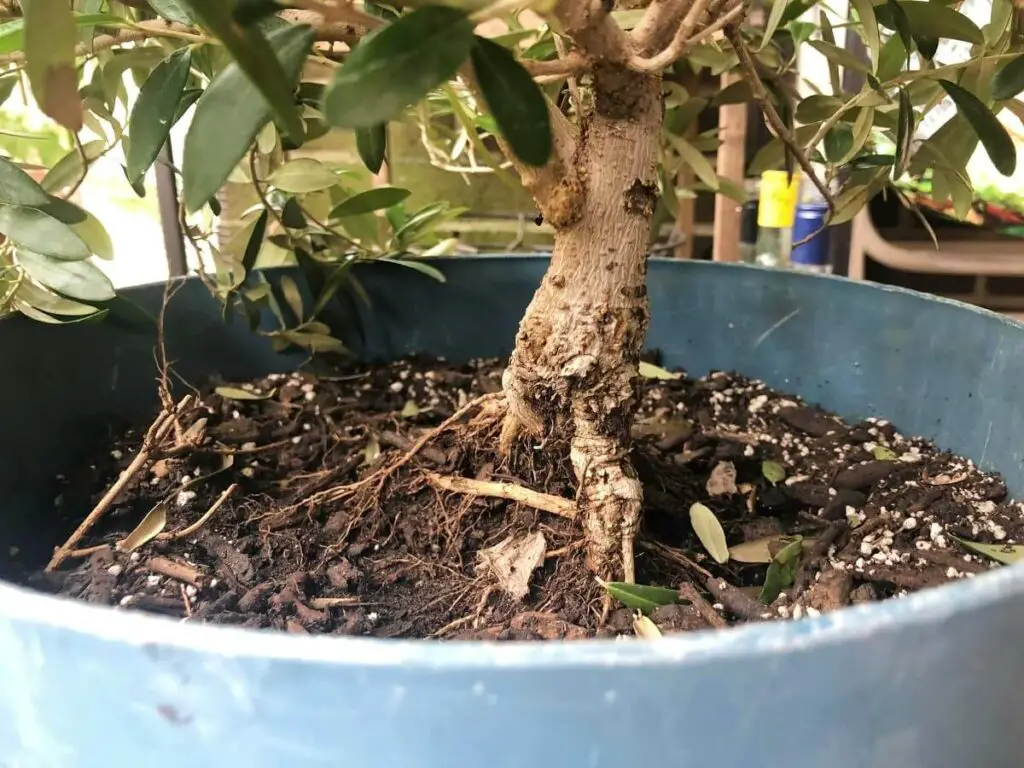
2. Evaluating Your Olive Tree Soil
Now you know what the best soil for olive trees is. However, the soil’s ability to support healthy olive tree life is determined by its physical, chemical, and biological composition.
You can examine soil properties like texture or color with your eye; moisture by touching the soil with your fingers. However, you cannot do the same for chemical properties in the soil. Therefore it is crucial to test your potting soil.
Why is Soil Testing so important?
- Testing is done to make recommendations as to whether the potting mix needs pH adjustments.
- It gives you a clear view if your tree is lacking any nutrients.
- It is important to test the moisture in a pot cause olive trees are completely intolerant of poor drainage.
For example, testing informs you of the soil’s health and eliminates events of over- or under-fertilization, which could lead to olive tree death.
How to Test Olive Tree Soil?
You can test your olive tree soil with home testing kits. They are inexpensive and great, providing results that are comparable to tests done in laboratory tests.
Furthermore, technology has evolved a lot, and currently, home test kits are made safe and easy for you to use with most of them being plug-and-read gadgets. Therefore you must test your soil for the best experience while growing your olive tree in a pot.
A test informs you if your olive tree soil requires a refill of macronutrients like phosphorous, potassium, sulfur, and nitrogen. Then consider adding fertilizers. There are many good fertilizers on the market, and my guidelines on the best fertilizer for olive trees in pots may help you choose the right one.
Testing Soil pH
If you want to test potting soil pH, simple and cheap pH testing strips are available online and at many garden centers.
Last update on 2024-04-12 / Affiliate links / Images from Amazon Product Advertising API
The ideal soil pH for olive trees is between 6 and 8.
- If your soil is too acidic or basic (below 6), add lime to raise soil pH.
- If soil is too alkaline (above 8), added sulfur will lower it.
Once the soil pH level is adjusted for your olive tree, do not put it out of your mind. Maintaining the correct pH level is an ongoing task, especially if the tree grows in a pot and indoors.
Even fertilizers can shift your olive tree soil pH over time. Hence, based on testing results, there’s a need for regular additions of lime or sulfur.
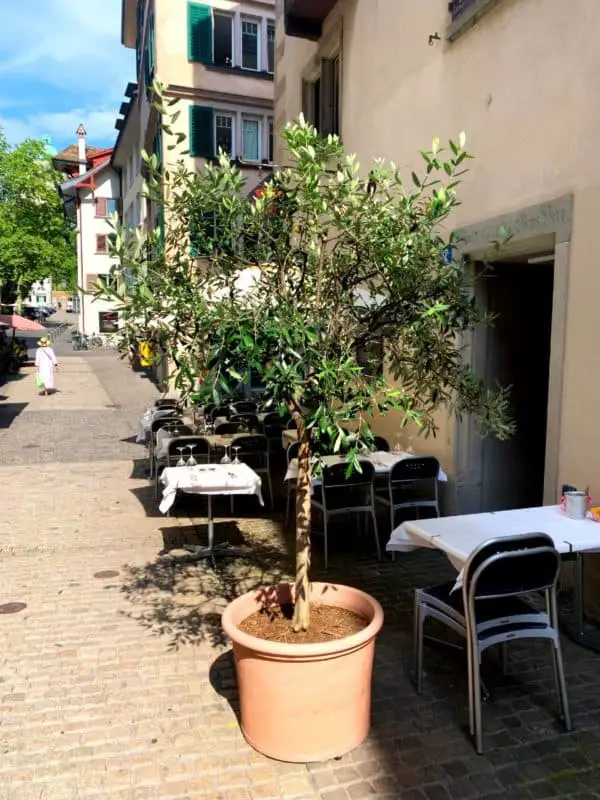
3. Ensure Soil Drainage
While you might be concerned about the best soil for olive trees in pots, ensuring the right soil drainage is vital too. Here are listed a few tips on how to ensure adequate soil drainage:
- Choosing a pot with plenty of drainage holes in the bottom prevents excess water from suffocating olive tree roots.
- Put 1 – 1.5 inches (2.5 – 4 cm) of small rocks (gravel or lava rock) in the pot before adding the potting mix.
- If you use a tray, put a layer of gravel or lava rock in it to prevent olive tree roots from sitting in the water.
- If your pot or container has ample drainage holes, a layer of the screen at the bottom can help contain the gravel and soil.
Good drainage is one of the essential things to consider when growing healthy olive trees in pots. And moisture meter may help you to detect if your tree is thirsty or wet!
Last update on 2024-04-12 / Affiliate links / Images from Amazon Product Advertising API
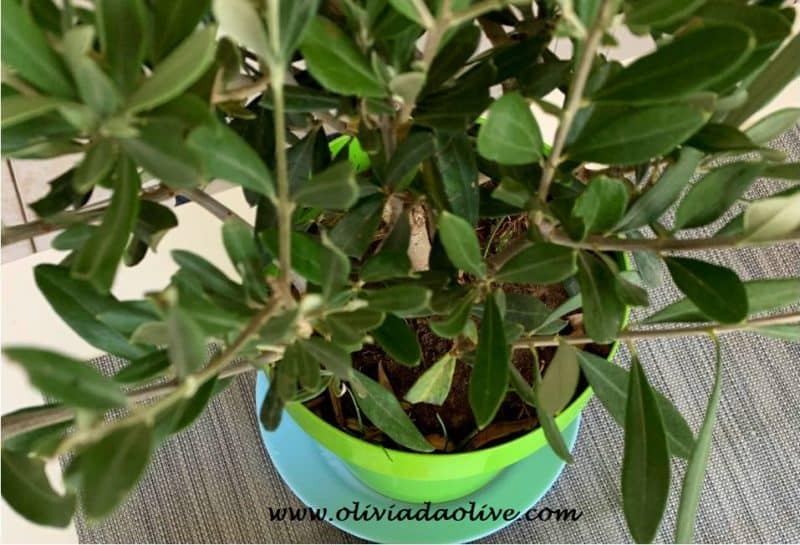
4. Regular Soil Aeration
Regularly aerating the soil ensures that it doesn’t become compacted, which can restrict root growth and limit access to water and nutrients. So, how do you aerate the soil around your precious tree? It’s simple!
Just grab a small garden fork or even a chopstick and gently loosen the soil around the base of your tree. Doing this every couple of months will make sure that your tree’s roots have plenty of room to breathe and grow.
5. Fertilization
When fertilizing your tree, it’s all about finding the right balance. Too little fertilizer and your tree might not get the nutrients it needs, but too much could be harmful.
Use a slow-release, granular fertilizer designed explicitly for olive trees, applying it according to the manufacturer’s recommendations. A balanced, nutrient-rich soil will keep your tree growing strong and producing a bountiful harvest of olives.
Last update on 2024-04-12 / Affiliate links / Images from Amazon Product Advertising API
6. Watering
Last but not least, let’s talk about watering – an essential practice for maintaining healthy soil in your potted olive tree. Olive trees prefer well-draining soil and can be sensitive to overwatering.
To ensure you’re providing the right amount of moisture, water your tree thoroughly when the top inch or two of soil feels dry to the touch. Be sure to use a container with drainage holes to prevent waterlogging.
For detailed guidance, I have 20 helpful tips on how to grow olive trees indoors and guide about potted olive trees care.
Looking for a Personalized Gift?
Adopt an OLIVE TREE in Greece –
Receive Premium Olive Oil!
V. Frequently Asked Questions
Is Cactus Soil Good for Olive Trees?
Cactus soil is not ideal for olive trees; even so, they can grow in poor soil. Cactus soil blends inorganic matter like gravel, sand, perlite, or pumice. It is designed to drain quickly, made explicitly for desert plants, and is generally too dry and nutrient-poor for olive trees.
Olive trees require well-draining soil rich in nutrients, with a pH between 6.0 and 8, and it is best to use a soil mix specifically formulated for them.
You can use cactus mix, such as Espoma cactus potting soil, instead of perlite or bark when making your potting mix.
Best Compost for Olive Trees
The best compost for olive trees is rich in organic matter and nutrients and has a neutral pH. Good options include compost from vegetable scraps, yard waste, animal manure, and commercially available compost or compost blends.
You should ensure the compost is fully decomposed before using it to avoid burning the tree’s roots. A good rule of thumb is to mix one part compost with two parts soil or potting mix and to use a well-draining mix to prevent waterlogging.
Can Olive Trees Grow in Poor Soil?
While olive trees can grow in poor soil, they will not thrive and produce high-quality fruit in such conditions. Olive trees require well-draining soil rich in nutrients, particularly nitrogen, phosphorus, and potassium. If the soil is too poor, the tree may not grow well, produce small fruit, or be more susceptible to pests and diseases.
In addition, if the soil is particularly poor, adding organic matter or a slow-release fertilizer can help improve its quality and ensure that the tree has the nutrients for healthy growth.
What is the best soil for potted olive trees?
Olive trees thrive in well-draining soil with a mix of loam or sandy loam and a slightly acidic to neutral pH level (6.0-8.0). A soilless mixture with components like peat, sand, perlite, vermiculite, and bark can also work well for potted olive trees.
Can I use regular potting soil for my olive tree?
While you can use regular potting soil, it’s best to choose a mix specifically designed for olive trees or amend the potting soil with additional components, such as sand or perlite, to improve drainage and aeration.
How do I know if my olive tree’s soil has proper drainage?
Signs of proper drainage include soil that dries out within a reasonable timeframe after watering and no visible pooling of water on the soil surface. If your soil remains consistently wet or waterlogged, you may need to improve drainage by adding sand, perlite, or other well-draining components to your soil mix.
VI. Final Thoughts
By now, you know how to maintain soil fit for the healthy life of your potted olive tree. However, to keep the productivity and fertility of the soil of your plant, I have these tips:
- Boost nutrition – especially nitrogen. Improve your olive tree soil with compost to boost nitrogen at least once per year.
- Improve drainage and aeration.
- Warmth and sunlight are essential for the vigorous olive tree in pot growth and development.
- Control moisture. Install a small, inexpensive moisture meter for olive trees to alert you before plants feel the deficiency. As well as water with care.
- Monitor weeds, pests, and diseases. Monitoring and controlling weeds, pests, and diseases is crucial to maintain robust growth for your olive trees.
Choosing the right pot and potting soil will significantly improve your olive tree’s performance and promote healthy, vigorous growth.
Also, having your soil tested at home is a fantastic idea to determine if your tree lacks essential properties: minerals and nutrients. This you can do yourself using home soil test kits.
Once the composition and pH of the soil are known, you can determine how best to handle it for olive tree needs.
Soil needs consistent care, and properties can be enhanced and managed by adding organic manures and fertilizers.
To get optimal results while growing olive trees in pots, you must maintain favorable conditions like sunlight and drainage. A moisture meter will help you control the watering routine and ensure it drains well.
Overall, results are based on the quality of the soil, management of the soil, and taking proper care of your olive tree.
Read Next
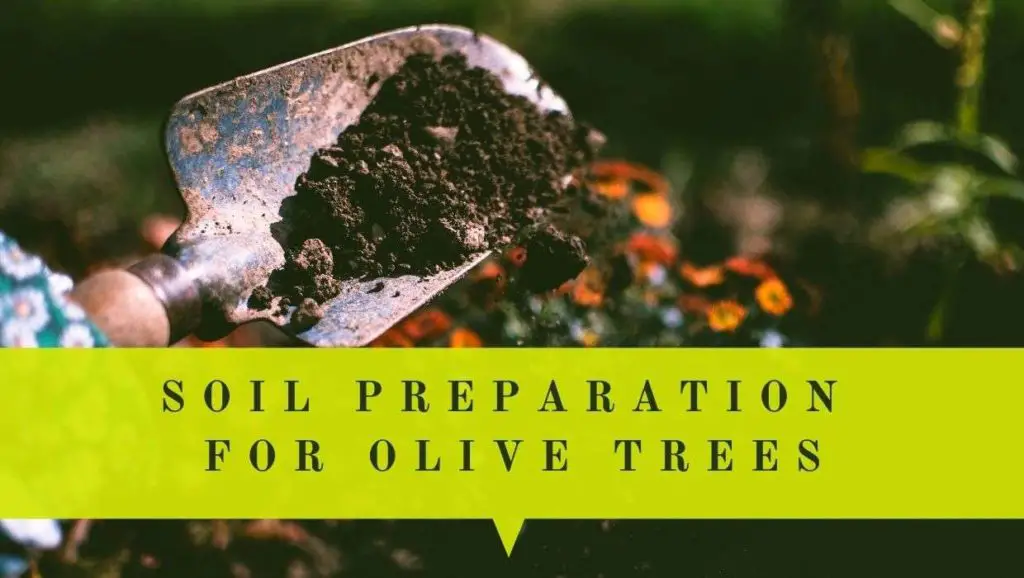
Learn More
- Cultivating Olive Trees: Soil
- 7 LARGE POTS FOR OLIVE TREES REVIEW
- How to Grow Olive Trees Indoors
- Best Fertilizer for Olive Trees
Join our FACEBOOK community: Olive Tree Growers and Enthusiasts.
Hi, I’m Vangelis Kleftogiannis, the founder of Oliviada and an established olive oil expert from Kalamata, Greece. My expertise isn’t just in producing quality Extra Virgin Olive Oil, but also in the cultivation and care of olive trees themselves. I am deeply committed to sharing my knowledge and know-how, helping others understand the intricacies of olive tree growing and the creation of quality olive oil.
Are You Looking to Buy an Olive Tree?
If you are looking to add more potted trees or other plants to your orchard, or if you like to replace a neglected olive tree, the best places to get them are your local nursery or an online nursery.
One of the most reliable and the world's largest online nurseries is Fast Growing Trees. They deliver fast, neat, and healthy plants backed with a 30-day guarantee.



